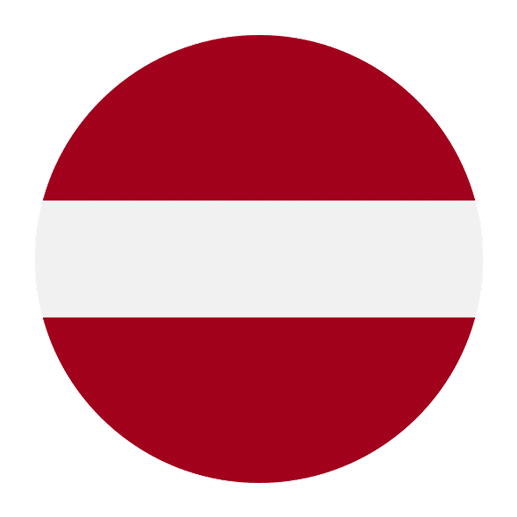Descriptive adjectives are essential in any language as they allow speakers to express qualities and characteristics, providing more detail and depth to their sentences. In Latvian, much like in English, descriptive adjectives play a crucial role in effective communication. This article will delve into the usage and examples of descriptive adjectives in Latvian, offering insights and practical examples to help you master this important aspect of the language.
Understanding Descriptive Adjectives
In Latvian, descriptive adjectives (pievilcības vārdi) are used to describe nouns, giving more information about their qualities, such as size, color, shape, and other characteristics. These adjectives agree with the noun they modify in gender, number, and case, which is a key point to remember when learning Latvian.
Latvian nouns can be masculine or feminine, and they can also be singular or plural. Therefore, the form of the descriptive adjective must change accordingly to match the noun. For instance, the adjective “liels” (big) has different forms depending on the noun it describes.
Gender Agreement
Latvian adjectives must agree with the gender of the noun they describe. Here’s an example using the adjective “skaists” (beautiful):
– Masculine: skaists vīrietis (a beautiful man)
– Feminine: skaista sieviete (a beautiful woman)
Number Agreement
Similarly, adjectives need to match the number (singular or plural) of the noun:
– Singular: skaists suns (a beautiful dog)
– Plural: skaisti suņi (beautiful dogs)
Case Agreement
Latvian nouns and adjectives also change form depending on their grammatical case. Latvian has seven cases (nominative, genitive, dative, accusative, instrumental, locative, and vocative), and adjectives must reflect these changes.
For example, using the adjective “mazs” (small) with the noun “bērns” (child):
– Nominative: mazs bērns (a small child)
– Genitive: maza bērna (of a small child)
– Dative: mazam bērnam (to a small child)
– Accusative: mazu bērnu (a small child, direct object)
– Instrumental: ar mazu bērnu (with a small child)
– Locative: mazā bērnā (in a small child)
– Vocative: mazs bērns! (small child!)
Common Descriptive Adjectives in Latvian
To effectively describe people, places, and things in Latvian, it’s helpful to learn some common descriptive adjectives. Below are a few examples, along with their meanings and usage in sentences.
Liels (big)
– Liels koks (a big tree)
– Liela māja (a big house)
Mazs (small)
– Mazs bērns (a small child)
– Maza grāmata (a small book)
Skaists (beautiful)
– Skaists zieds (a beautiful flower)
– Skaista sieviete (a beautiful woman)
Vecs (old)
– Vecs cilvēks (an old person)
– Veca mašīna (an old car)
Jauns (young/new)
– Jauns zēns (a young boy)
– Jauna māja (a new house)
Garš (tall/long)
– Garš vīrietis (a tall man)
– Gara upe (a long river)
Īss (short)
– Īss ceļš (a short road)
– Īsa kleita (a short dress)
Labs (good)
– Labs suns (a good dog)
– Laba ideja (a good idea)
Slikts (bad)
– Slikts laiks (bad weather)
– Slikta filma (a bad movie)
Karsts (hot)
– Karsts dzēriens (a hot drink)
– Karsta diena (a hot day)
Auksts (cold)
– Auksts ūdens (cold water)
– Auksta nakts (a cold night)
Using Comparative and Superlative Forms
Just as in English, Latvian uses comparative and superlative forms of adjectives to compare one thing to another or to describe something as the highest degree of a quality.
Comparative Form
The comparative form is used to compare two things. In Latvian, this is often done by adding the suffix -āks/-āka/-āki/-ākas to the adjective. The ending changes to match the gender and number of the noun.
For example, using the adjective “liels” (big):
– Lielāks (bigger) – masculine singular
– Lielāka (bigger) – feminine singular
– Lielāki (bigger) – masculine plural
– Lielākas (bigger) – feminine plural
Example sentences:
– Šis koks ir lielāks nekā tas koks. (This tree is bigger than that tree.)
– Mana māsa ir lielāka par mani. (My sister is bigger than me.)
Superlative Form
The superlative form describes something as the highest degree of a quality. In Latvian, this is usually done by adding the prefix vis- to the adjective. The adjective must still agree in gender and number with the noun.
For example, using the adjective “skaists” (beautiful):
– Vis skaistākais (the most beautiful) – masculine singular
– Vis skaistākā (the most beautiful) – feminine singular
– Vis skaistākie (the most beautiful) – masculine plural
– Vis skaistākās (the most beautiful) – feminine plural
Example sentences:
– Viņa ir vis skaistākā sieviete pilsētā. (She is the most beautiful woman in the city.)
– Tie ir vis skaistākie ziedi dārzā. (These are the most beautiful flowers in the garden.)
Practice Exercises
To solidify your understanding of descriptive adjectives in Latvian, try the following practice exercises. Translate the sentences from English to Latvian, ensuring the adjectives agree in gender, number, and case with the nouns.
1. The big house is on the hill.
2. She has a small dog.
3. The tall man is my friend.
4. This is a beautiful painting.
5. The old book is on the table.
6. We have a new car.
7. The bad weather ruined our plans.
8. The cold water is refreshing.
9. This road is shorter than that one.
10. He is the best student in the class.
Answers to Practice Exercises
1. Lielā māja ir uz kalna.
2. Viņai ir mazs suns.
3. Garais vīrietis ir mans draugs.
4. Šis ir skaists gleznojums.
5. Vecā grāmata ir uz galda.
6. Mums ir jauna mašīna.
7. Sliktais laiks sabojāja mūsu plānus.
8. Aukstais ūdens ir atsvaidzinošs.
9. Šis ceļš ir īsāks nekā tas.
10. Viņš ir labākais skolēns klasē.
Conclusion
Descriptive adjectives are a vital component of the Latvian language, allowing speakers to add detail and color to their conversations. Understanding how these adjectives agree with nouns in gender, number, and case is crucial for accurate and effective communication.
By familiarizing yourself with common descriptive adjectives and practicing their comparative and superlative forms, you can significantly enhance your Latvian language skills. Remember to continually practice and immerse yourself in the language for the best results. Happy learning!

